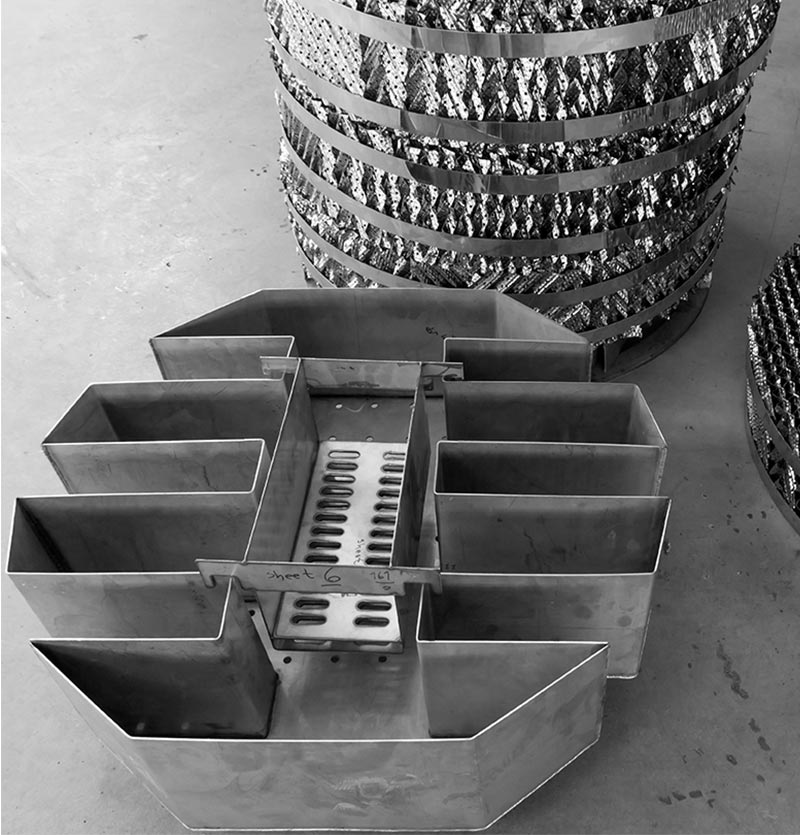Degasifying System-(Deaerators)- هوا زدا
Hits : 3305 |
What is a Deaerator?
Deaerators are mechanical devices that remove dissolved gases from boiler
feedwater. Deaeration protects the steam system from the effects of corrosive
gases. It accomplishes this by reducing the concentration of dissolved oxygen and
carbon dioxide to a level where corrosion is minimized.
We suggest you to read the "more details" part, to know more about deaerators.
Degasifying Systems (Deaerators)
What is degasifying (deaerator) ?
Deaerators ( Degassing system) are mechanical equipment which eliminate dissolved gases from boiler feed water. This process protects the steam system from the effects of corrosive gases. It accomplishes this by decreasing the concentration of dissolved oxygen and carbon dioxide to a level where corrosion is minimized.
A dissolved oxygen level
of 5 parts per billion (ppb) or lower is needed to prevent corrosion in most highpressure (>200 pounds per square inch) boilers. While oxygen concentrations of
up to 43 ppb may be tolerated in low-pressure boilers, equipment life is extended
at little or no cost by limiting the oxygen concentration to 5 ppb. Dissolved carbon
dioxide is essentially completely removed by the deaerator.
How do they work?
The design of an effective deaeration system depends upon the amount of gases to be removed and the final oxygen gas concentration desired. This in turn depends upon the ratio of boiler feedwater makeup to returned condensate and the operating pressure of the deaerator. Deaerators use steam to heat the water to the full saturation temperature corresponding to the steam pressure in the deaerator and to scrub out and carry away dissolved gases. Steam flow may be parallel, cross, or counter to the water flow. The deaerator consists of a deaeration section, a storage tank, and a vent. In the deaeration section, steam bubbles through the water, both heating and agitating it. Steam is cooled by incoming water and condensed at the vent condenser. Noncondensable gases and some steam are released through the vent. Steam provided to the deaerator provides physical stripping action and heats the mixture of returned condensate and boiler feedwater makeup to saturation temperature. Most of the steam will condense, but a small fraction (usually 5% to 14%) must be vented to accommodate the stripping requirements. Normal design practice is to calculate the steam required for heating and then make sure that the flow is sufficient for stripping as well. If the condensate return rate is high (>80%) and the condensate pressure is high in comparison to the deaerator pressure, then very little steam is needed for heating and provisions may be made for condensing the surplus flash steam.
Deaerator Steam Consumption
The deaerator steam consumption is equal to the steam required to heat incoming water to its saturation temperature, plus the amount vented with the noncondensable gases, less any flashed steam from hot condensate or steam losses through failed traps. The heat balance calculation is made with the incoming water at its lowest expected temperature. The vent rate is a function of deaerator type, size (rated feedwater capacity), and the amount of makeup water. The operating vent rate is at its maximum with the introduction of cold, oxygen-rich makeup water.
Advantages
Cost reduction because of reduces chemical use
Easy installation
Long service life
Reduced oxygen concentration

